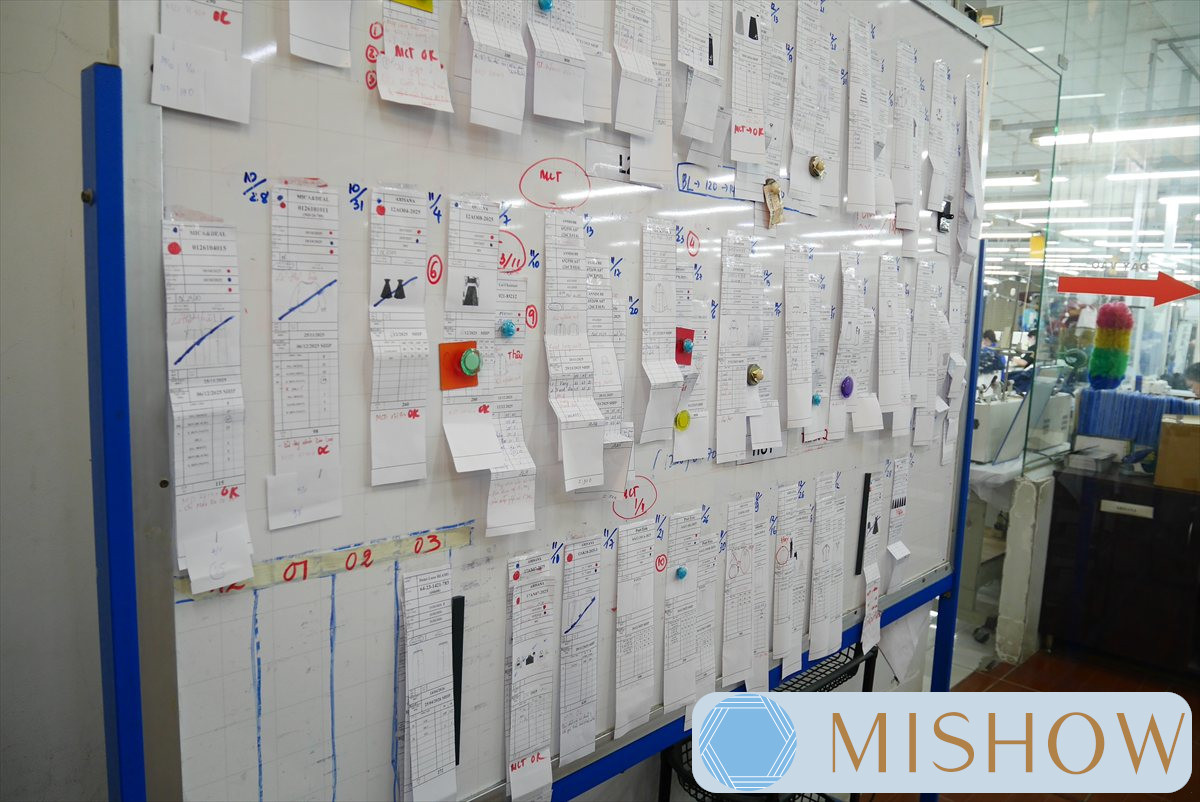At Mishow, we don’t consider “being able to produce small lots” as something special.
The real challenge lies in producing small lots quickly and accurately.
When the quantity is small, what really matters is the precision of planning and how well information is organized.
And above all, it depends on people — their understanding and coordination, not just on machines or equipment.
There are months when we produce nearly 100 different styles.
In such situations, everyone must know exactly which process is at which stage, and who is responsible for which item.
Even a small misunderstanding can immediately lead to delayed schedules or quality issues.
That’s why, every morning at Mishow, we start the day with a short meeting to confirm the production plan together.
Each member clearly understands what task they are responsible for and what must be completed that day.
This shared awareness allows us to run multiple styles at the same time without confusion — even with small quantities.
In most sewing factories, the workflow is led by experienced operators.
But Mishow is a little different.
We intentionally hire very few people who have worked in other factories.
Our production flow and decision-making standards are quite unique, and sometimes those with strong habits from other places struggle to adapt.
For us, it’s faster and more effective to teach our way of working from zero, rather than to unlearn and relearn.
When a new staff member joins, we start by explaining every step carefully —
why this order matters, and why this way ensures accuracy.
We don’t just chase efficiency; we value precision and repeatability.
It may look slow at first, but once everyone moves with the same understanding, flexibility and response speed naturally increase.
The real strength behind our small-lot production is not individual skill, but the shared understanding and teamwork across the factory.
We have built a structure that keeps the flow steady even if one person is missing.
Because at Mishow, we believe:
“Small quantity makes accuracy even more important.”
That is the essence of how we approach small-lot manufacturing.





